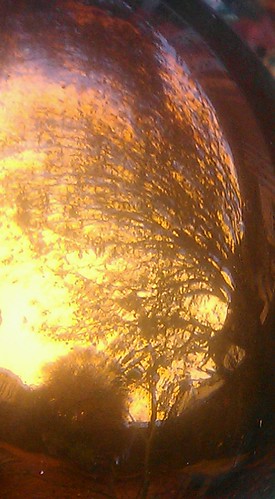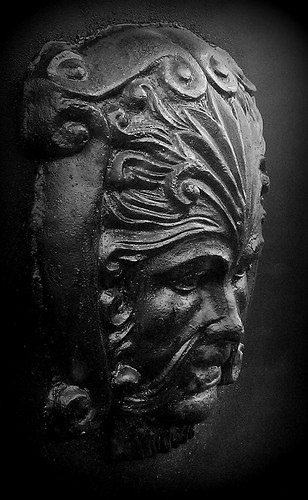"The first Thanksgiving Day did occur in the year 1637, but it
was nothing like our Thanksgiving today. On that day the
Massachusetts Colony Governor, John Winthrop, proclaimed
such a "Thanksgiving" to celebrate the safe return of a band
of heavily armed hunters, all colonial volunteers. They had just
returned from their journey to what is now
Mystic, Connecticut
where they massacred 700 Pequot Indians. Seven hundred Indians
- men, women and children - all murdered." Richard Greener
Read the Richard Greener 2010 article from the Huffington Post ( and below).
The idea of the American Thanksgiving feast is a fairly recent fiction. The idyllic partnership of 17th Century European Pilgrims and New England Indians sharing a celebratory meal appears to be less than 120 years-old. And it was only after the First World War that a version of such a Puritan-Indian partnership took hold in elementary schools across the American landscape. We can thank the invention of textbooks and their mass purchase by public schools for embedding this "Thanksgiving" image in our modern minds. It was, of course, a complete invention, a cleverly created slice of cultural propaganda, just another in a long line of inspired nationalistic myths.
The first Thanksgiving Day did occur in the year 1637, but it was nothing like our Thanksgiving today. On that day the Massachusetts Colony Governor, John Winthrop, proclaimed such a "Thanksgiving" to celebrate the safe return of a band of heavily armed hunters, all colonial volunteers. They had just returned from their journey to what is now Mystic, Connecticut where they massacred 700 Pequot Indians. Seven hundred Indians - men, women and children - all murdered.
This day is still remembered today, 373 years later. No, it's been long forgotten by white people, by European Christians. But it is still fresh in the mind of many Indians. A group calling themselves the United American Indians of New England meet each year at Plymouth Rock on Cole's Hill for what they say is a Day of Mourning. They gather at the feet of a stature of Chief Massasoit of the Wampanoag to remember the long gone Pequot. They do not call it Thanksgiving. There is no football game afterward.
How then did our modern, festive Thanksgiving come to be? It began with the greatest of misunderstandings, a true clash of cultural values and fundamental principles. What are we thankful for if not - being here, living on this land, surviving and prospering? But in our thankfulness might we have overlooked something? Look what happened to the original residents who lived in the area of New York we have come to call Brooklyn. A group of them called Canarsees obligingly, perhaps even eagerly, accepted various pieces of pretty colored junk from the Dutchman Peter Minuet in 1626. These trinkets have long since been estimated to be worth no more than 60 Dutch guilders at the time - $24 dollars in modern American money. In exchange, the Canarsees "gave" Peter Minuet the island of Manhattan. What did they care? They were living in Brooklyn.
Of course, all things - especially commercial transactions - need to be viewed in perspective. The nearly two-dozen tribes of Native Americans living in the New York area in those days had a distinctly non-European concept of territorial rights. They were strangers to the idea of "real property." It was common for one tribe to grant permission to another to hunt and fish nearby themselves on a regular basis. Fences, real and imagined, were not a part of their culture. Naturally, it was polite to ask before setting up operations too close to where others lived, but refusal in matters of this sort was considered rude. As a sign of gratitude, small trinkets were usually offered by the tribe seeking temporary admission and cheerfully accepted by those already there. It was clearly understood to be a sort of short-term rental arrangement. Sad to say, the unfortunate Canarsees apparently had no idea the Dutch meant to settle in. Worse yet for them, it must have been unthinkable that they would also be unwelcome in Manhattan after their deal. One thing we can be sure of. Their equivalent of today's buyer's remorse brought the Canarsees nothing but grief, humiliation and violence.
Many Indians lived on Long Island in those days. Another Dutchman, Adrian Block, was the first European to come upon them in 1619. Block was also eager to introduce European commercialism and the Christian concept of "real estate" to these unfortunate innocents. Without exception, these Indians too came out on the short end in their dealings with the Dutch.
The market savvy unleashed by the Europeans upon the Indians constituted the first land use policies in the New World. In the 17th Century it was not urban but rather rural renewal. The result was of course the same. People of color with no money to speak of got booted out and the neighborhood which was subsequently gentrified and overrun by white people.
Not far from Manhattan, one tribe of about 10,000 Indians lived peacefully in a lovely spot on a peninsula directly along the ocean. There they fished in the open sea and inland bay. They hunted across the pristine shoreline and they were quite happy until they met a man - another Dutchman - named Willem Kieft. He was the Governor of New Netherland in 1639. These poor bastards were called the Rechaweygh (pronounced Rockaway). Soon after meeting Governor Kieft, they became the very first of New York's homeless.
The people of New Netherland had a lot in common with the people of Plymouth Colony. At least it appears so from the way both of these groups of displaced and dissatisfied Europeans interacted with the local Indians. The Pilgrims in Plymouth had a hard time for the first couple of years. While nature was no friend, their troubles were mostly their own doing. Poor planning was their downfall. These mostly city dwelling Europeans failed to include among them persons with the skills needed in settling the North American wilderness. Having reached the forests and fields of Massachusetts they turned out to be pathetic hunters and incompetent butchers. With game everywhere, they went hungry. First, they couldn't catch and kill it. Then they couldn't cut it up, prepare it, preserve it and create a storehouse for those days when fresh supplies would run low. To compensate for their shortage of essential protein they turned to their European ways and their Christian culture. They instituted a series of religious observances. They could not hunt or farm well, but they seemed skilled at praying.
They developed a taste for something both religious and useful. They called it a Day of Fasting. Without food it seemed like a good idea. From necessity, that single Day became multiple Days. As food supplies dwindled the Days of Fasting came in bunches. Each of these episodes was eventually and thankfully followed by a meal. Appropriately enough, the Puritans credited God for this good fortune. They referred to the fact they were allowed to eat again as a "Thanksgiving." And they wrote it down. Thus, the first mention of the word - "Thanksgiving." Let there be no mistake here. On that first Thanksgiving there was no turkey, no corn, no cranberries, no stuffing. And no dessert. Those fortunate Pilgrims were lucky to get a piece of fish and a potato. All things considered, it was a Thanksgiving feast.
Did the Pilgrims share their Thanksgiving meal with the local Indians, the Wampanoag and Pequot? No. That never happened. That is, until its inclusion in the "Thanksgiving Story" in 1890.
Let the Wampanoag be a lesson to us especially in these troubled economic times. These particular Indians, with a bent for colorful jewelry, had their tribal name altered slightly by the Dutch, who then used it as a reference for all Indian payments. Hence, wampum. Contrary to what we've been shown in our Western movies, this word - wampum - and its economic meaning never made it out of New England.
Unlike wampum, Thanksgiving Day has indeed spread across the continent. It would serve us well to remember that it wasn't until the victorious colonial militia returned from their slaughter of the Pequot that the New Americans began their now time-honored and cherished Thanksgiving.
Enjoy your turkey.






